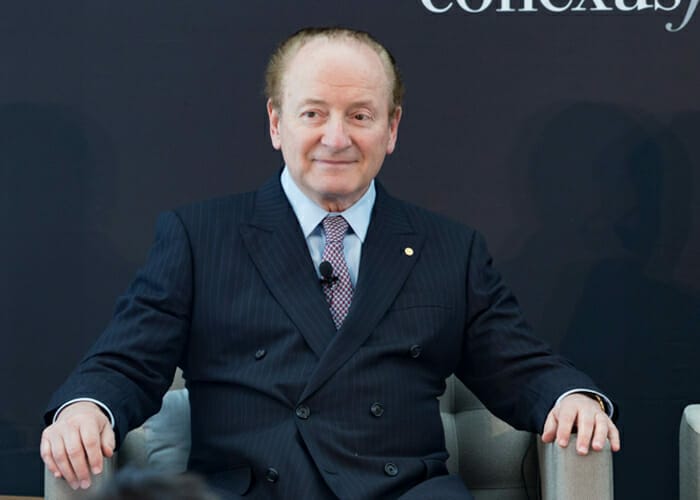Asset owners are agents of change but are not acting that way, a panel at the Fiduciary Investors Symposium determined.
The director of policy and research at the Principles for Responsible Investment, Nathan Fabian, said asset owners were prime movers in the financial system.
“Asset owners are very influential actors and are active participants and they should be trying to align the financial system and the interests of beneficiaries over the long term,” Fabian said. “Traditionally, that’s been done through asset allocation and that’s it, but there is more going on than just that role.
“There are failures in the financial system that can impact on society, the environment and ultimately your portfolios. These shortcomings stem from certain facets, such as the supply chain, the misalignments in public policy and the lack of reliable market indicators [for the] long term…Asset owners should do something about this,” he told symposium delegates at the Massachusetts Institute of Technology in Cambridge.
Also sitting in on the session, which was chaired by David Wood, an adjunct lecturer in public policy at the Initiative for Responsible Investment within Harvard’s Kennedy School, were Cbus Super chief investment officer Kristian Fok, CalPERS trustee Priya Mathur, and MIT Sloan School of Management senior lecturer Robert Pozen.
Decisions beyond price alone
Fok gave the audience an insight into ways asset owners can think outside the current system and behaviours to effect change.
Cbus has a fully owned property development subsidiary that manages $2.5 billion of its property assets.
“We were determined to avoid competing on price, so were very early adopters of wanting to build energy-efficient buildings. If you think about business as your reputation and your right to do business, then you think about things, and do things, very differently,” he said. “If you can’t assess societal issues, you don’t have a right to play.”
Fok gave the examples of a residential project in suburban Sydney that Cbus Property bought the rights to develop.
“We had to illustrate the quality of the building, but also the community and amenities we put into the package,” he explained. “We agreed to allocate a portion of the development to affordable housing, and donated a historic stable back to government. If we had to make decisions on these individual aspects on price alone we wouldn’t have done them.”
CalPERS’ Mathur said the fund considers its 1.8 million current members but also its future stakeholders.
“We expect the state of California to be operating for a long time to come, so our future members are also on our mind,” she said.
CalPERS has $330 billion in assets under management and pays about $20 billion every year in retirement benefits.
“We think about the long term [for] our beneficiaries but also in terms of ensuring that our fund is sustainable and able to pay those benefits, and maintain a licence to operate,” Mathur explained.
She said CalPERS lost 24 per cent of its assets in the financial crisis and that was a wake-up call to the impact investments had on the future.
“That was nearly a quarter of our assets in a single year,” she recalled. “Going into it, we were overfunded and we’ve been trying to recover ever since. This drew our attention to the fact we can’t be focused just on our returns today. [We also must consider] how our investments [today] affect markets and our investments in the future.
“For example, in securities lending, we need to look at who is borrowing the securities; generally, its hedge funds, which may be short-term focused and not aligned with our long-term interests. Now we retain all of our proxy votes, even if we do lend securities.”
CalPERS spent nearly two years revamping its investment beliefs, putting environmental, social and governance principles at their core.
“This was hard to grapple with because these types of issues – climate change and labour rights – have often been thought of as non-financial factors; the materiality of them had not been explicitly linked in many investors’ minds,” Mathur said. “There’s been a huge evolution in that.”
Realistic ways to make change
Speaking about the role of service providers, MIT Sloan’s Pozen, who was formerly chief executive of Fidelity and chair of MFS, said managers should be thinking more long term but asset owners need to have realistic expectations.
“I have come to the conclusion if we could get asset managers to think three to five years out we’d be doing really well; 10 and 20 years is unrealistic, considering all the pressures we are all under,” he said.
PRI’s Fabian said the industry was looking the wrong way in terms of how to solve short-termism.
“People are talking about refining how the supply chain works,” he said. “But we should be thinking about how [individually managed accounts affect] the beneficiary over the life of the beneficiary, including the kind of world the beneficiary will live in. They should then be setting the chain to reflect those drivers,” he said.
Pozen agreed it would be optimal to “get off the current system”, but that was not easy to do.
“Investors should be pushing for longer-term criteria and better and broader definitions than earnings per share,” Pozen said.
Fabian liked the idea of service-level agreements in financial services based on competency and the service provided.
“Imagine if a funds manager said, ‘What is the time horizon of the beneficiaries of the investors in this fund? How can I set up the portfolio to account for that?’ There would be trade-offs for that, but if you had that type of conversation and understanding, then there would also be a better understanding of how to set remuneration,” he said.




